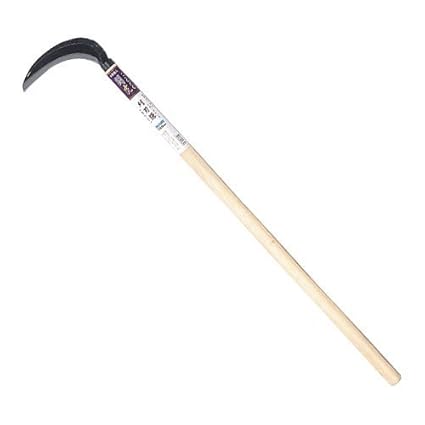The Kyoto Imperial Palace is a special place. A place full of tradition, elegance, beauty and national treasures.
The maintenance of gardens in Kyoto is still highly rated, but even here, the Kyoto Imperial Palace is special.
Today I would like to introduce two traditional techniques, which are still conducted in Kyoto Gosho today, but seldom seen outside.
The pine care in the Palace is known as “Gosho-sukashi” (御所透かし). While there are still other famous pruning forms like “Tera-sukashi” or “Machiya-sukashi”, the intended goal of “Gosho–sukashi” is a natural appearance pruning style.

picture via 資料の京都史蹟散策
To achieve this, the Nagae-kama (長柄鎌) and no shears are used. Kama are sickles, which are often used for weeding, but also to harvest rice in the traditional way or in the corners of a rice paddy. The inward side of the blade is sharpened.
The Nagae-kama, kama on an approx. 2 – 4 m long stick, are different. They have a small hook next to the outward side, which are both sharpened. The gardeners climb the trees and will cut new shoots and branches with one strong push of the Nagae-kama. Needless to say that this is a very advanced pruning technique.
Another traditional pine care is the use of a plant used in kampo as strengthening extract. Kampo is an alternative healing method based on plant extracts, which is very common in Japan and originally originated in China.
Plant extracts are consumed in powder or granulated form and sold under special numbers (kampo 035, for example, is shigyakusan, an extract of Bupleurum scorzonerifolium, Peony root, Poncirus trifoliata, and Chinese liquorice, and is used against stomach ache).
In Kyoto Gosho, a gardener is practicing kampo to strengthen the pines. One extract he uses is senkyuu 川芎, made out of the rhizome of Cnidium officinale. The gardener cooks the granulate and uses the broth and the granulate on the roots of the pines.
(Please consider, that even natural strengthening extracts have to be dosed carefully! If experimenting with them, you might face a loss of some plants!)
I hope this small excursion into Japanese most traditional maintenance techniques was an interesting read.
This article was first published on Patreon.
If you like what you read, consider supporting our Work on Patreon
click for more info
Related Content:
Interesting reads and articles:
The Characteristics of the Kyoto−Gyoen “National Garden” and “Gosho−sukashi” Pine−Pruning there
Following links are tied to the Amazon Associates program:
Kampo: A Clinical Guide to Theory and Practice, Second Edition
Price: from $ 36,66
5-star rating.
Click to see more details
闘虎 Reapers Scythe Blade (Strong Type) 210 MS 1682 by キンボシ(Kinboshi)
Price: from ¥ 3,074
4+ star rating.
Click to see more details
Niwaki: Pruning, Training and Shaping Trees the Japanese Way
Price: from $28,13
4+ star rating.
Click to see more details
All products shown are tied to the Amazon Associates program. If you purchase through one of the provided links, we will get a small percentage of the amount while you will not pay more than usual.








